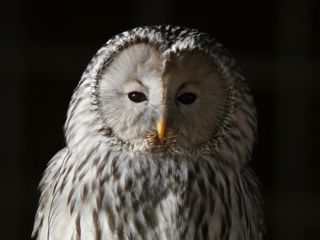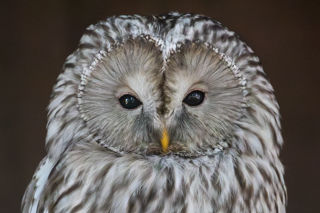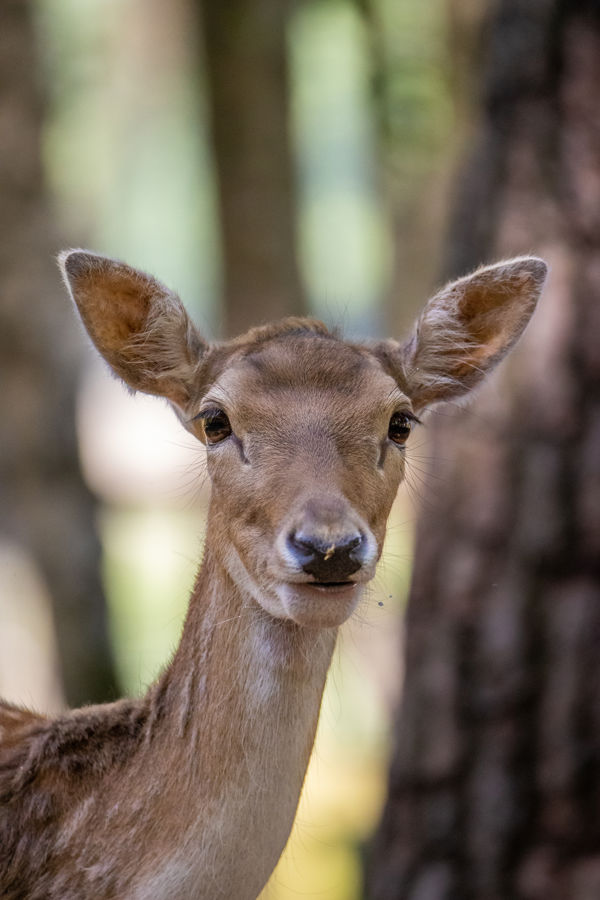Ural Owl *CURRENTLY OFFSHOW*

General information
Medium to large owl with a round head and no ear tufts. Hunts during the night and twilight hours for small mammals up to the size of a hare, and also takes birds, frogs and insects. They tend to watch for prey from their perch, more often just dropping down onto their prey rather than catching prey during active flight. They have incredibly large ears hidden under dense feathers, meaning they have such excellent hearing that they can even hear prey under 20 to 30 cms of snow. The Ural Owl is a monogamous owl using tree hollows for nests and laying 2 to 5 eggs. The young fledge at 45 days with both parents caring for them for a further 2 months.
Like other owls, they have binocular vision with their eyes fixed in place. To ensure they can see around themselves without having to move their body, they can rotate their head up to 270 degrees. To do this they actually have 14 vertebrae in their neck, twice the amount of a person or even a giraffe!

Latin name - Strix uralensis
Class - Aves
Order - Strigiformes
Family - Strigidae
IUCN Status - Least concern
Habitat - Mature open forests
Distribution - Northern Europe, Scandinavia across Russia to Korea and Japan
Average Lifespan
20 years
Threats
Habitat loss
Fun Fact
The Ural Owl’s territorial call can be heard for 2 km; quite a distance for a small-medium sized owl!
Our Residents
Twilight a male from Paignton Zoo.

Sign up to our newsletter
Join our mailing list in order to keep up to date with park news and special offers.




